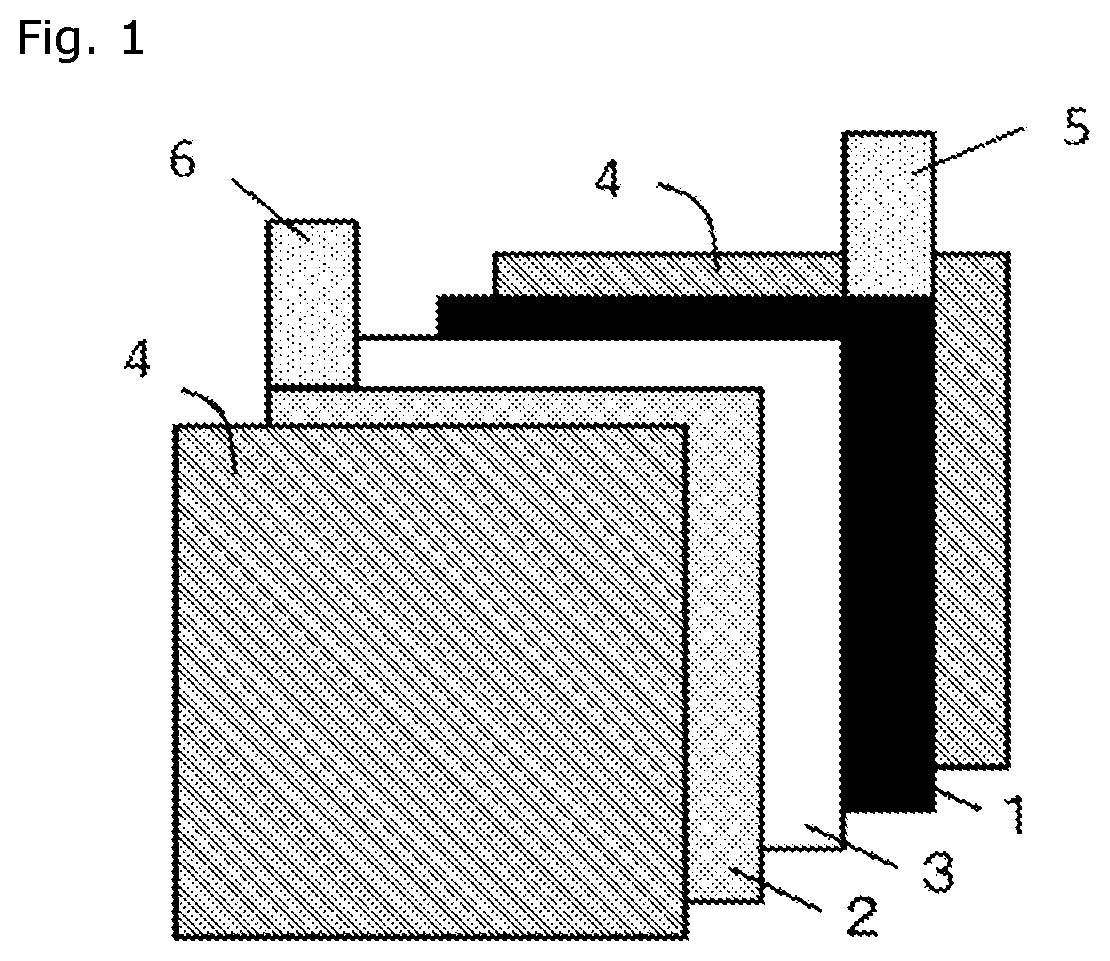Composition for lithium ion secondary battery positive electrode, lithium ion secondary battery positive electrode, and lithium ion secondary battery
a lithium ion secondary battery and positive electrode technology, applied in the direction of positive electrodes, active material electrodes, cell components, etc., can solve the problems of insufficient conductive paths, inability to increase the amount of active materials, and the conventional method has a defect, etc., to achieve excellent cycle characteristics, high energy density, and high energy density
- Summary
- Abstract
- Description
- Claims
- Application Information
AI Technical Summary
Benefits of technology
Problems solved by technology
Method used
Image
Examples
example 1
Lithium Ion Secondary Battery Positive Electrode Composition
[0059]Used as an active material was lithium iron phosphate having the average particle diameter D50 of 4 μm, trade name “M121” manufactured by Aleees. Used as conductive materials were carbon black having the average primary particle diameter of 18 nm and the DBP absorption of 310 mL / 100 g, trade name “SAB” manufactured by Denka Co. Ltd., abbreviated as “acetylene black-A” in Table 1; and N-methyl-2-pyrrolidone dispersion of carbon nanotubes having the average diameter of 9 nm and the BET specific surface area of 243 m2 / g, trade name “LB107” manufactured by CNano Technology, abbreviated as “CNT-A” in Table 1. 0.45% by mass of the carbon black, 0.55% by mass of the carbon nanotubes (as the dispersed mass), 1.0% by mass of the N-methyl-2-pyrrolidone solution of polyvinylidene fluoride (as the dissolved mass) as the binder, and lithium iron phosphate as the balance (i.e., 98.0 mass % in Example 1) were mixed with N-methyl-2-p...
example 2
[0067]The same method as Example 1 was carried out to prepare a dispersion of a positive electrode composition, a positive electrode, and a lithium ion secondary battery of Example 2, except for that:[0068]carbon black was trade name “Li-435” manufactured by Denka Co. Ltd., abbreviated as “acetylene black-B” in Table 1, the average primary particle diameter of 23 nm and the DBP absorption of 270 mL / 100 g;[0069]the content of the carbon black was 1.0% by mass;[0070]the content of the carbon nanotubes (as the dispersed mass) was 1.0% by mass; and[0071]the content of the N-methyl-2-pyrrolidone solution of polyvinylidene fluoride (as the dissolved mass) was 2.0% by mass.
[0072]The obtained product of Example 2 was subjected to the same evaluation processes as Example 1. The results are shown in Table 1.
example 3
[0073]The same method as Example 1 was carried out to prepare a dispersion of a positive electrode composition, a positive electrode, and a lithium ion secondary battery of Example 3, except for that:[0074]carbon black was trade name “Li-100” manufactured by Denka Co. Ltd., abbreviated as “acetylene black-C” in Table 1, the average primary particle diameter of 35 nm and the DBP absorption of 228 mL / 100 g;[0075]the content of the carbon black was 1.65% by mass;[0076]the content of the carbon nanotubes (as the dispersed mass) was 1.35% by mass; and[0077]the content of the binder, i.e., the N-methyl-2-pyrrolidone solution of polyvinylidene fluoride (as the dissolved mass) was 2.0% by mass.
[0078]The obtained product of Example 3 was subjected to the same evaluation processes as Example 1. The results are shown in Table 1.
PUM
| Property | Measurement | Unit |
|---|---|---|
| average primary particle diameter | aaaaa | aaaaa |
| diameter | aaaaa | aaaaa |
| BET specific surface area | aaaaa | aaaaa |
Abstract
Description
Claims
Application Information
 Login to View More
Login to View More - R&D
- Intellectual Property
- Life Sciences
- Materials
- Tech Scout
- Unparalleled Data Quality
- Higher Quality Content
- 60% Fewer Hallucinations
Browse by: Latest US Patents, China's latest patents, Technical Efficacy Thesaurus, Application Domain, Technology Topic, Popular Technical Reports.
© 2025 PatSnap. All rights reserved.Legal|Privacy policy|Modern Slavery Act Transparency Statement|Sitemap|About US| Contact US: help@patsnap.com

